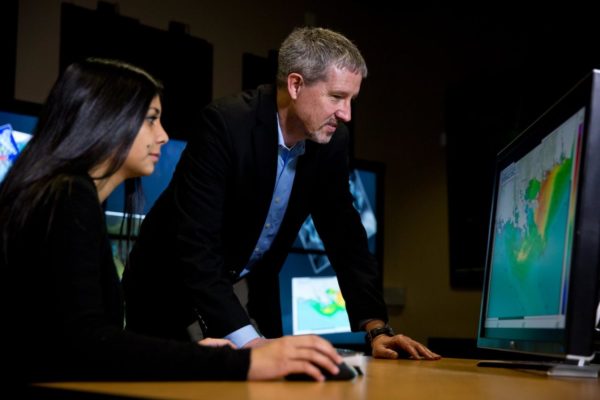AUSTIN, Texas — The University of Texas at Austin is introducing a new Bachelor of Science degree in computational engineering — a new field that focuses on modeling and simulation to develop solutions for society — with the first freshman class set to start in fall 2017. UT Austin is the first university in the United States to offer this as a major at the undergraduate level.
The program, which will be offered by the Department of Aerospace Engineering and Engineering Mechanics in the Cockrell School of Engineering, includes an interdisciplinary curriculum focused on giving students the opportunity to work on complex 21st-century engineering problems within a wide range of real-world applications.
During their first two years, students will primarily study the fundamentals of engineering along with engineering sciences. Their third and fourth years will emphasize further depth in mathematics, algorithms and computer languages and applications.
“The field of computational engineering continues to grow, and it presents exciting possibilities for the future,” said Noel Clemens, chair of the Department of Aerospace Engineering and Engineering Mechanics. “Because of the extraordinary quality of our students and the expertise of our faculty in this area, UT Austin is uniquely positioned to offer a program that could be a model for others across the country.”
Led by Clint Dawson, associate department chair and head of UT Austin’s Computational Hydraulics Group, the new degree program brings together faculty members who are internationally recognized for their work in computational engineering and engineering education and leverages the expertise of UT Austin’s Institute for Computational Engineering and Sciences.
Students who enter the program will study the development of computer algorithms that translate mathematical and physical descriptions of engineering problems into languages that computers can process; in other words, the students will learn how to use and develop certain tools in order to solve physical problems using computers.
Examples of the types of problems students might work on include developing computer models for locating oil and gas reserves, using computer codes to predict loads on buildings during earthquakes, designing turbine blades in jet engines or developing methods for simulating blood flow inside the cardiovascular system. Other applications might include smart energy design, software design, data mining and visualization.
Because of the breadth and depth covered in the curriculum, graduating computational engineers will be capable of pursuing careers in a variety of fields including energy, manufacturing, aerospace, health care, microelectronics and more.
“Graduates of this new program will be well prepared for the engineering jobs of the future,” Clemens said. “Whether they choose to pursue employment in industry, government or consulting, they will have the tools they need to succeed. And, those interested in pursuing graduate work in computational engineering and science will also be at a great advantage having gone through this program.”
For more information about the program, visit ae.utexas.edu/coe.




